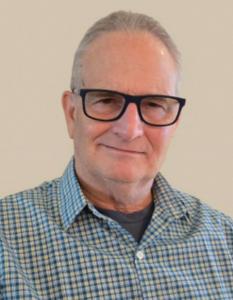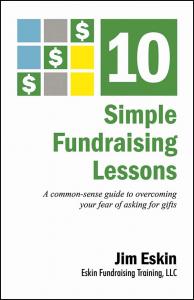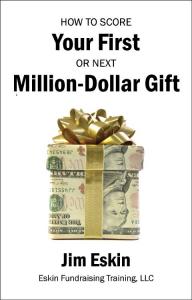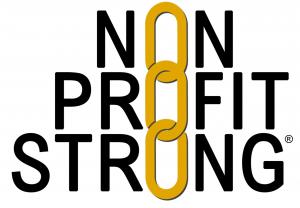Eskin Fundraising Training: Communications And Fundraising Are Seamless
Effective two-way communication is crucial to donor prospects knowing, liking and trusting non-profits — a prerequisite to gifts of time, talent and treasure.
The communications goal is to reach the donor prospect with the most personal and emotional message, delivered through the best fitting channel, and sent at the right time.”
SAN ANTONIO, TX, UNITED STATES, September 4, 2025 /EINPresswire.com/ -- After spending the first half of a career in communications and public relations and the second half in fundraising, we absolutely view the two disciplines as part of one seamless continuum. They are so connected you cannot pinpoint where one ends and the other begins.— Jim Eskin
The goal in fundraising is to sustain momentum so that donor prospects know, like and trust non-profits.
It is no surprise that as much as expertise of accomplished colleagues in the communications arena is welcome, much of an effective fundraiser’s time is devoted to the art and science of written, oral, and digital communications.
Here are 10 core elements on the power of how winning fundraisers tap the power of communications to successfully nurture relationships — no, make that friendships — with donor prospects.
1. Listening is the most essential component of communication. Non-profits must discover donor prospect’s values, priorities and needs to understand how they can be aligned with the mission. Begin by finding out the donor prospect’s communication style preferences. Some might prefer e-mail, texting, videoconference, social media, phone calls and personal visits (which is the profession’s highest ranked form of connection). With the exception of communicating with medical offices, faxing has mostly disappeared.
2. The building block of communications is good writing. Good writing — clear, concise and factual — will carry the day through a host of different printed, electronic and digital formats. This includes proposals, memorandums, newsletters, summaries of meetings, gift acknowledgments, and various appeals, to name just a few. You can’t go wrong hiring someone with strong writing skills for the development team.
3. Less is more. With people being bombarded by an ever-growing number of communication touches, it is increasingly difficult to break through. Decades ago, the goal was to respect the boundaries of a single page. Today that translates to perhaps one or two scrolls of the computer or smart device screen. For that reason, every non-profit should prioritize a short list of no more than three persuasive points to be emphasized in the communications piece.
4. In many ways the dynamic advent of new technology has leveled the playing field among non-profits with varying budget capacity. Unlike direct mail (which still plays a very effective role), it costs about the same to send one e-mail as 10,000. So, it’s essential to make an unrelenting commitment to gather good e-mail addresses, especially with those donor prospects who have indicated a preference for that type of communication.
5. Be careful about spacing various communications out so that they reach donor prospects evenly over the year and avoid overwhelming recipients during short spans of time while ignoring them at other times of the year. It is prudent to develop a content calendar, so communications are sent on a strategic basis. Different communications should reinforce one another. Research indicates that recipients must receive the same message on multiple occasions before it sinks in. Employ different media and formats to drive key messages home.
.
6. Prepping for the solicitation. Why this might not mean a word-for-word script, professional and volunteer non-profit leaders have to enter each meeting with a clear understanding of the timeline and essential points to be delivered, especially who is going to make the ask, the amount, the purpose of the gift and when payment is desired. It is strongly recommended that the solicitation be made early in the meeting to allow for plenty of time for questions and responding to concerns.
7. Visuals are far more effective than a thousand words. No matter how superb the writing is, compelling graphics — photos, charts, pull-out quotes and other tools — will time after time capture and hold the recipient’s attention much more than words.
8. More and more impact is being achieved by conveying mission, impact and stories through producing short videos. It is amazing to see the polished results you can get just by using basic smart devices. Such videos can be easily e-mailed to donor prospects.
9. Capture what happens in donor meetings. Another indispensable application of strong communication is ensuring contact reports are written and promptly filed on meetings with donor prospects. This is especially critical for work on major gifts. With the reality of high fundraiser turnover these provide institutional knowledge and perspective so new staff members can step in and continue friendship building.
10. Thanking donors for their precious gifts of time and money is both the right and smart thing to do. Don’t fall into the trap of recycling form letters. Make sure each stewardship communication fits the gift and personality of the donor. Our favorite form of thanking remains snail mailing a handwritten note card immediately after a gift is made. Think about it: How many handwritten note cards do you receive? It will make you stand out.
Bottom line: Successful fundraisers need to be effective writers and oral communicators. They also must be champions of colleagues who have primary responsibility for newsletters, e-mail blasts, websites, podcasts, videos and all different types of communication choices, and commit to personally reviewing each and every one.
Effective two-way communication is crucial to donor prospects knowing, liking and trusting the nation’s 1.5 million non-profits — a prerequisite to receiving gifts of time, talent and treasure.
Jim Eskin
Founder
Eskin Fundraising Training
10410 Pelican Oak Drive
San Antonio, TX 78254-6727
Cell: 210.415.3748
E-Mail: jeskin@aol.com
www.eskinfundraisingtraining.com
About Eskin Fundraising Training
After a successful career leading advancement for three institutions of higher education, Jim Eskin’s consulting practice, Eskin Fundraising Training, launched in 2018, builds on the success of more than 250 fundraising workshops, webinars, webcasts, podcasts and board sessions, and provides the training, coaching and support services to equip non-profit leaders to replace fear of fundraising with comfort and confidence. He has authored more than 150 guest columns that have appeared in daily newspapers, business journals and blogs across the country. He publishes Stratagems, a monthly e-newsletter exploring timely issues and trends in philanthropy. Sign up here for a free subscription. You will also receive invitations to free virtual learning community programs. He is author of 10 Simple Fundraising Lessons, an 82-page common sense guide to understanding the art and science of fundraising, and How to Score Your First or Next Million-Dollar Gift, 104 pages filled with strategies, best practices and homework assignments to unlock exciting opportunities that elevate organizational impact to the next level. Both are available in print and digital formats through Pathway, the book distributor, and Amazon. Quantity discounts are available to non-profits who want to share books with teams of management, development staff, board and volunteers. Eskin is also available for customized virtual training for boards, staff, and fundraising committees. His newest customized service, Fundraising Urgent Care, offers 48-hour turnaround in addressing general strategy and tactical challenges that require immediate responses.
FOR MORE INFORMATION:
Jim Eskin
Founder
Eskin Fundraising Training
10410 Pelican Oak Drive
San Antonio, TX 78254-6727
Cell: 210.415.3748
E-Mail: jeskin@aol.com
www.eskinfundraisingtraining.com
Links
Website: www.eskinfundraisingtraining.com
Newsletter sign-up: https://lp.constantcontactpages.com/sl/36Wz1P1
10 Simple Fundraising Lessons purchase: www.pathwaybookservice.com/products/10-simple-fundraising-lessons
How To Score Your First or Next Million-Dollar Gift purchase:
www.pathwaybookservice.com/products/how-to-score-your-first-or-next-million-dollar-gift?_pos=1&_psq=ho&_ss=e&_v=1.0
Nominate Your Non-Profit North Star Podcast:
https://lp.constantcontactpages.com/sv/x1rYzFO
Jim Eskin
Eskin Fundraising Training LLC
+1 210-415-3748
email us here
Visit us on social media:
LinkedIn
Facebook
Legal Disclaimer:
EIN Presswire provides this news content "as is" without warranty of any kind. We do not accept any responsibility or liability for the accuracy, content, images, videos, licenses, completeness, legality, or reliability of the information contained in this article. If you have any complaints or copyright issues related to this article, kindly contact the author above.





